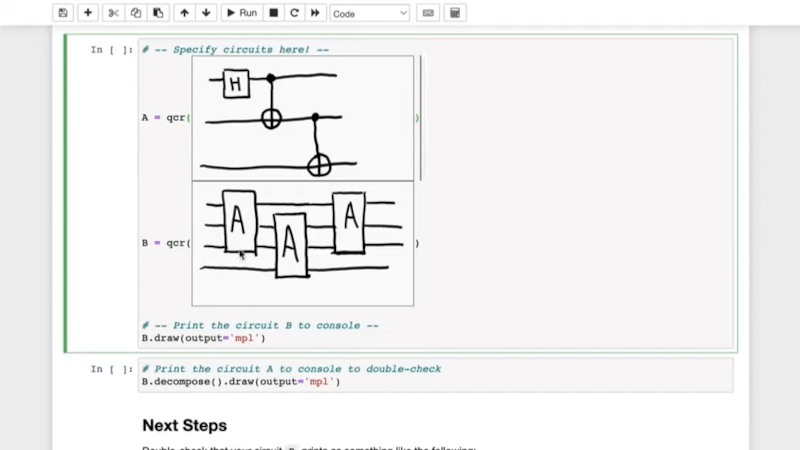
Back in the late 1970s and early 1980s, engineering students would take a few semesters of drafting and there would usually be a week or two of “computer-aided drafting.” In those days, that meant punching cards that said RECTANGLE 20,30 or something like that and getting the results on a plotter. Then we moved on to graphical CAD packages, but lately, some have gone back to describing rather than drawing complex designs. Cornell University researchers are trying to provide the same options for coding. They’ve built a Juypter notebook extension called Notate that allows you to sketch and handwrite parts of programs that interact with traditional computer code. You can see a video about the work below.
The example shows quantum computing, but the idea could be applied to anything. The example has sketches that generate quantum circuits. Naturally, there is machine learning involved.
We don’t disagree that this is a great option, but we learned our lesson about wanting to draw when it came to FPGAs. When you start FPGAs, there is a tendency to want to draw schematics and skip the high-level languages like VHDL or Verilog. But then if you do a 7-segment decoder in a schematic, it is difficult to draw and prone to errors that are hard to correct. But in VHDL or Verilog it is a few lines of highly-readable and highly-correctable code. Now try designing a CPU using schematics. It can be done, but it is a lot more work.
Usually, when you hear about graphical programming, it is a little more structured. We wonder how Notate would handle cursive?
Better Coding Through Sketching
Source: Manila Flash Report
0 Comments